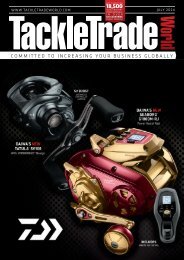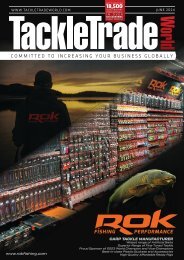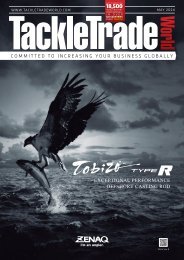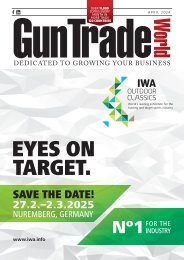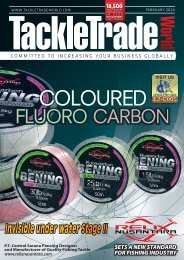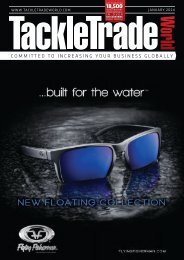You also want an ePaper? Increase the reach of your titles
YUMPU automatically turns print PDFs into web optimized ePapers that Google loves.
THE DETAIL NATURAL GAS<br />
Photo: Bürstner<br />
▲ Bürstner gave us a glimpse of what is possible with compressed natural gas powered vehicles with its Eliseo motorhome.<br />
friendly future. At the moment,<br />
alternative engines for camper<br />
vans tend to be a more longterm<br />
issue. The respective<br />
demand is currently still low,”<br />
explained Bürstner’s managing<br />
director Jens Kromer.<br />
“However, as soon as we<br />
manage to increase their reach<br />
and the refuelling infrastructure<br />
improves, the development of<br />
alternative engine types may<br />
well gain considerably more<br />
rapid dynamics over the next<br />
few years.”<br />
HYDROGEN HYPE<br />
But CNG is just one of the<br />
gas-based alternatives that are<br />
being experimented with vehicle<br />
manufacturers and leisure<br />
vehicle producers. Late last year,<br />
Stellantis revealed a hydrogenpowered<br />
version of its popular<br />
Opel Vivaro van. Named the<br />
Vivaro-e Hydrogen, the van is<br />
based on the existing battery<br />
electric Opel Vivaro-e, and<br />
with full tanks of hydrogen, the<br />
driving range is more than 400<br />
kilometres. The 45 kW fuel cell<br />
is capable of generating enough<br />
power for continuous highway<br />
driving. It takes only three<br />
minutes to refuel with hydrogen<br />
<strong>–</strong> about the same time needed<br />
to fill up a conventional diesel<br />
or petrol vehicle.<br />
The 10.5 kWh lithiumion<br />
battery provides dynamic<br />
peak power when required,<br />
for example, at start-up and<br />
under acceleration. Since the<br />
battery covers power needs in<br />
such situations, the fuel cell<br />
can run at optimum operating<br />
conditions. The battery also<br />
enables regenerative braking,<br />
while the plug-in capability<br />
offers the opportunity to<br />
recharge the battery externally,<br />
if necessary, for example at a<br />
charging station, providing<br />
50 km of pure battery electric<br />
range.<br />
Opel CEO, Uwe<br />
Hochgeschurtz, said: “With<br />
the new Opel Vivaro-e<br />
HYDROGEN we are opening<br />
the next chapter in our<br />
sustainable mobility offensive.<br />
▲ Is natural gas the fuel<br />
solution? (Photo: Stellantis)<br />
The clever concept combines<br />
the advantages of hydrogen<br />
fuel cell propulsion with the<br />
versatility and capabilities of our<br />
best-selling light commercial<br />
vehicle.”<br />
Opel’s original intention for<br />
this fuel type is commercial<br />
and logistics, but it is easy to<br />
see how it could be translated<br />
into the motorhome and<br />
campervan sector. The main<br />
issue with Hydrogen and CNG<br />
is the fact that they are not<br />
yet fully widespread, and the<br />
amount of popular opinion<br />
they have behind them is small<br />
in comparison to electric. It’s<br />
not clear yet whether electric<br />
vehicles are the answer to<br />
the mobility problem facing<br />
the world, but with smart gas<br />
alternatives making strong cases<br />
for themselves, it’s possible that<br />
the future may have more than<br />
one long-term solution.<br />
www.campingtradeworld.com | 19




